Written on: August 1, 2012 by SprayTM

The Consumer Specialty Products Association’s (CSPA) 2012 Mid-Year Meeting was held May 8-11 in Chicago, IL. The theme was Sustainability: Driving Future Consumers, Future Markets. The 99th CSPA Annual Meeting will take place Dec. 2-6 in Fort Lauderdale,
FL.
At the General Session, CSPA Board Chairwoman Lisa Alexander noted that sustainability now drives all markets and impacts us all. She observed that 1/3 of companies in the U.S. have experienced an increase in profits through sustainability, and proudly noted that two CSPA members ranked in Green Chemistry’s Top 100.
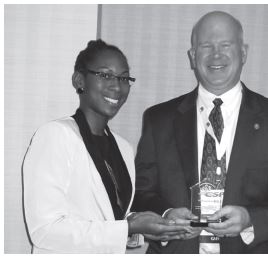 For the consumer, there are now phone apps to help users access information on a company’s social causes, sustainability success, usage of slave labor and recycling eligibility, Alexander explained.
For the consumer, there are now phone apps to help users access information on a company’s social causes, sustainability success, usage of slave labor and recycling eligibility, Alexander explained.
CSPA President Chris Cathcart emphasized that the CSPA is a leader in public policy. Industry is embracing sustainability as well as ingredient disclosure. If an obscure NY State law is enacted, it could have a major impact on ingredient disclosure, both in New York and throughout the U.S. The CSPA intends to make that sure that any state law is in the best interest of both business and consumers. The redesigned CSPA website will help keep its 230 member companies better informed about the issues facing the industry.
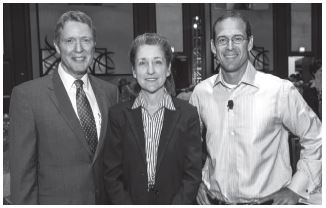 While not much will be done between now and the end of the year regarding TSCA reform, CSPA’s name is out there as a leader on this issue, Cathcart said.
While not much will be done between now and the end of the year regarding TSCA reform, CSPA’s name is out there as a leader on this issue, Cathcart said.
General Session Keynote Speaker was Paul DePodesta, Executive Director of Player Development for major league baseball team the New York Mets. He was a key figure in the 2011 film “Moneyball,” based on the bestselling book of the same name.
While working for the Oakland As, DePodesta developed a new set of metrics that gave a better indication of credit and blame in different game scenarios. The team couldn’t afford to hire players who could “do it all,” but instead focused on players who each had at least one particular above-average skill. As a result of this process, the team consistently made the playoffs, despite having one of the lowest payrolls in baseball. Currently, most Major League baseball teams now utilize similar assessment tools.
DePodesta equated Major League baseball to the pharmaceutical industry in that both spend a lot of money on projects that are more likely to fail than succeed. Therefore, zeroing in on the winners becomes critical to a team’s and a company’s long-term success.
Aerosol Division Meeting
At the Aerosol Division Meeting, Bill Frauenheim, VPOperations, Diversified CPC International, Inc. and Chairman of the CSPA APD Executive Board presented State of the Aerosol Products Division (APD).
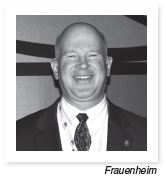 Regarding the BOV net contents declaration regulatory issue, several BOV fillers approached the National Conference on Weights & Measures (NCWM) to allow BOV products to be labeled as net volume as opposed to net weight (as required for aerosol products). Many of these BOV products (such as suntan lotions) compete with non-pressurized package forms that are labeled as net volume.
Regarding the BOV net contents declaration regulatory issue, several BOV fillers approached the National Conference on Weights & Measures (NCWM) to allow BOV products to be labeled as net volume as opposed to net weight (as required for aerosol products). Many of these BOV products (such as suntan lotions) compete with non-pressurized package forms that are labeled as net volume.
Another issue being discussed is whether these BOV products are properly classified as aerosol products or something else entirely. Frauenheim acknowledged and welcomed several guests of non-CSPA member BOV companies attending the meeting, adding the CSPA looks forward to working with them to gain a consensus on BOV issues before further approaching regulatory authorities.
The three most important issues being addressed by CSPA general committees that APD is monitoring very closely are: air quality regulations, green chemistry regulations and ingredient communication. In addition, they are monitoring the efforts of the PARG and the Plastic Containers Subcommittee on their efforts to introduce products packaged in plastic aerosol containers into the U.S. market. Ingredient Communication is a voluntary program for air care, cleaning, auto and polishes and floor maintenance, including aerosol products. Ingredients present at a concentration of greater than 1% will be listed in descending order by predominance.
Ingredients present at a concentration of not more than 1% will be listed but may be disclosed without respect to order of predominance.
CSPA has created a Consumer Product Ingredient Dictionary to assist members performing Ingredient Communication and just released the third update to the First Edition, with the Second Edition coming soon. There are now over 350 ingredient monographs with the Second Edition possibly approaching 500. This is an important technical reference even for those not involved in Ingredient Communication.
CSPA expects to see another California proposal, probably this year, concerning Ingredient Communication. Federal legislation was introduced again late last year by Congressman Israel, but it is not supportable, and CSPA expects Senator Franken to introduce a bill soon. CSPA has been meeting with both House and Senate to see if they are willing to introduce legislation that it would not be forced to oppose. New York State has been seeking to implement its existing ingredient disclosure regulation this year based on existing law.
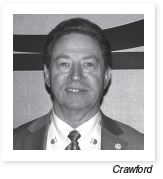 Steel Yourself
Steel Yourself
Greg Crawford, Executive Director of the Steel Recycling Institute, presented Boost Aerosol Recycling with the Steel Recycling Logo!
Recycling steel saves money and conserves resources such as coal, iron ore, limestone and, of course, steel. It saves landfill space as steel has a perpetual scrap value. Steel recycling benefits from magnetic separation, minor contaminate forgiveness and no memory of past lives.
 The CSPA selected Yuning Zhang from Guilford, CT, as the 24th recipient of the Murray Glauberman Memorial Scholarship Award. A graduating senior from Guilford High School and salutatorian of his class, Zhang serves as co-chair of the steering committee for the Developmental Assets for Youth, a coalition dedicated to reducing drug abuse and bullying in Guilford. His efforts helped to secure a $625,000 federal grant.
The CSPA selected Yuning Zhang from Guilford, CT, as the 24th recipient of the Murray Glauberman Memorial Scholarship Award. A graduating senior from Guilford High School and salutatorian of his class, Zhang serves as co-chair of the steering committee for the Developmental Assets for Youth, a coalition dedicated to reducing drug abuse and bullying in Guilford. His efforts helped to secure a $625,000 federal grant.
Additionally, Zhang is the captain of the State Champion fencing team, founder and president of the GHS Action Against Hunger Club, captain of the math team and president of the Interact Club. He also has pursued independent scientific research, which has earned him selection as a Siemens Competition Semifinalist and Intel Science Talent Search Semifinalist. Furthermore, he is a co-author of three scientific papers submitted for publication. This fall, he will attend Harvard University to pursue a degree in biology or economics.
Since the scholarship program began in 1988, CSPA has awarded a total of $192,000 to be used toward the pursuit of a college degree.
Steel container recycling rates were 67.1% in 2010, compared to only 15% in 1988. Over 102 million U.S. residents are now able to recycle empty steel aerosol cans, as 75 of the top 100 curbside programs include them.
Crawford encouraged all product manufacturers to put the steel recycling logo on cans; it has the words “Please Recycle When Empty” as well as the word “STEEL” surrounded by chasing arrows. The logo encourages and instructs consumers how to recycle. It also encourages them to call their community’s recycling program leaders and ask them to add aerosol cans to the accepted mix.
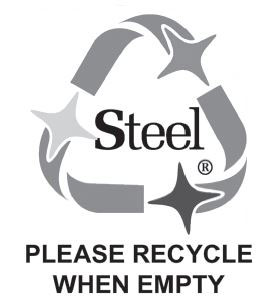 A holistic approach William Archer, Ma ager–Global Sustainability at SC Johnson (SCJ) presented Sustainable (Aerosol) Product Development. He defined sustainability as “development that meets the needs of the present without compromising the ability of future generations to meet their own needs.” He indicated that SCJ has a strong commitment to corporate responsibility and a legacy of environmental
A holistic approach William Archer, Ma ager–Global Sustainability at SC Johnson (SCJ) presented Sustainable (Aerosol) Product Development. He defined sustainability as “development that meets the needs of the present without compromising the ability of future generations to meet their own needs.” He indicated that SCJ has a strong commitment to corporate responsibility and a legacy of environmental
leadership.
Our planet is experiencing a rapid population growth, with nine billion people expected by the year 2050; we will need the resources of 2.5 more planets to sustain that expected growth, said Archer. The global middle class is expected to triple by 2030 and by 2050, the GDP’s of Mexico, Brazil, Russia and Indonesia are all projected to have outgrown that of the UK. Natural resource consumption is expected to rise to 170% of the Earth’s capacity by 2040.
There are two approaches to sustainable product development. The first is to develop and market a Green product; the second is a holistic approach to Greening the whole company. This includes product packaging, scientific research, product formula selection, supply chain component /sourcing, Green brands, manufacturing facilities and operations (e.g. power for facilities).
 Manufacturing processes can be altered to reduce energy consumption, water use and emissions as well as minimize waste. Shipping can be moderated to optimize case and pallet packing patterns, reduce shipping distances and be more energy efficient.
Manufacturing processes can be altered to reduce energy consumption, water use and emissions as well as minimize waste. Shipping can be moderated to optimize case and pallet packing patterns, reduce shipping distances and be more energy efficient.
Product packaging can include material selection and the use and promotion of recycled and renewable materials. Reducing packaging is the best way to improve the environmental footprint of packaging and it can also save costs. To this point, SCJ performed a case study of cleaning product concentrates for trigger sprayers. They use less packaging and decrease shipping impacts because they have less weight and volume. They reduce waste ending up in landfills and are overall better for the environment than regular, one-time use trigger cleaning products, said Archer. However, SCJ found that U.S. consumers prefer not to refill their household cleaning bottles, and, as a result, stores won’t stock concentrates and companies hesitate to create them.
Manufacturers and consumers need to increase understanding, and while aerosols are certainly a sustainable option, there is much room for innovation. Consumers like the idea of helping the environment but it needs to be simple and cost effective. Archer concluded that SCJ will continue to investigate and innovate to deliver against the consumer’s wishes in more sustainable ways, and challenged the audience to do the same.